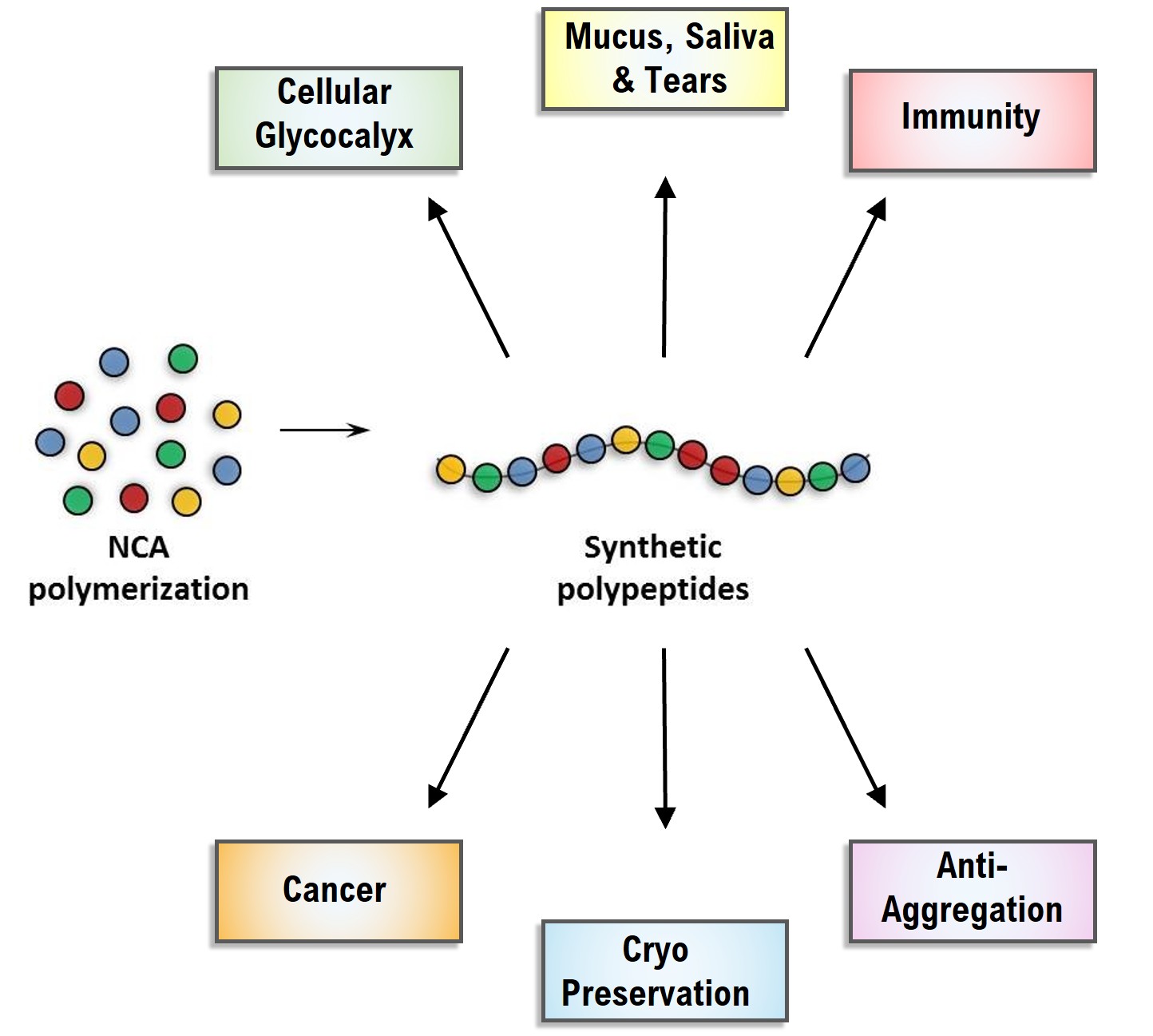Kramer Lab Research
Synthetic polypeptides are uniquely poised to harness the structure and function of native proteins with the synthetic advantages of chemically produced polymers. Our polypeptides are applied in the following areas:
Synthetic Mucins and Mucus, Saliva, and Tears:
Mucus, saliva, and tears are natural biomaterials that lubricate and hydrate tissues. They also control passage of drugs, nutrients, and pathogens into the underlying cells and house the majority of the microbiome. The Kramer lab studies how these processes are regulated by mucin glycoproteins, which are the major component of these fluids. We developed methodology to prepare fully synthetic mucins with precisely tunable structures. Our research has applications in drug delivery, infection, and immunity, and in therapeutics for dry eye, xerostomia, and anti-infectives.
The Glycocalyx in Cancer and Infection:
The surface of every epithelial and endothelial cell is covered with an array of glycoproteins, predominantly mucins, that collectively form the glycocalyx. Cancer cells have a strikingly altered glycocalyx, but the causes and effects are poorly understood. The glycocalyx is also involved in infection by viruses, bacteria, and fungi. The Kramer lab has developed tools for precision engineering of the glycocalyx with synthetic mucins. At the molecular level, we can control glycocalyx height, mechanics, and glycans presented. We are using our methodology to systematically study cancer and infection to contribute to new diagnostics, therapeutics, and vaccines.
Synthetic Antifreeze Proteins and Biological Cryopreservation:
Storage under freezing conditions is essential to prolong the lifetime of biologics such as protein drugs, nanoparticle drugs, cell products, and potentially even whole organs. However, ice crystals formed during freeze/thaw can damage these materials. The Kramer lab has developed a series of ice inhibitors based on the structures of natural antifreeze proteins produced by extremophile organisms. Our synthetic polypeptides are non-toxic, digestible, effective at ultra-low concentration and, in some cases, are extremely economical to prepare. Our research has broad implications for improved cryopreservation of biologics, and could even be used in foods.
